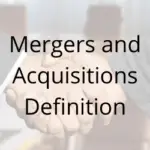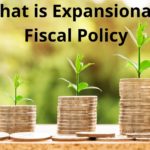Universal Basic Income: Andrew Yang’s ‘Freedom Dividend’ Doesn’t Add Up
Even under Yang’s optimistic and implausible estimates, he still falls short of the $3 trillion needed.
The answer to fund the Freedom Dividend, will invariably be either greater government spending, or higher taxes.

Presidential candidate, Andrew Yang, is running on a proposed Universal Basic Income (UBI). Or as Yangs calls it, The Freedom Dividend. This would provide every individual over 18 with a guaranteed income of $1,000 per month.
As of 2018, there was roughly 252 million citizens over 18. In total, this would cost the taxpayer over $3 trillion, or roughly 16% of GDP.
After we consider the $600 billion spent on existing welfare payments, the total cost would reduced to $2.4 trillion.
To first answer why Yang’s UBI proposal won’t work, we must first analyse how it will be funded.
A Value Added Tax (VAT)
One of Yang’s proposals is the introduction of a Value Added Tax (VAT).
By his own estimates, this would bring in $800 billion in revenue. That is very well, but who is paying for it?
VAT is essentially a consumption tax. Businesses may increase prices to compensate for the cost. However, for products that are more sensitive to price, businesses may in fact take the hit to their profits instead. So the VAT will be paid for via a combination of higher prices and lower profit margins.
Lower Profit Margins
The logic goes that businesses may have lower profit margins, but as consumers have more funds, they will also buy more products.
As the demand for more products increases, so too will the businesses demand for labour to produce those products.
Employment will rise and the economy will expand. However, how many businesses can truly take a hit on a VAT of 10%? Wal-Mart certainly can’t. Its profit margins are currently just under 2%, so any VAT would have to be added to the price of its products.
However, there are other firms such as McDonalds that can take the hit. It currently has a profit margin of 28%, based on revenues of $21 billion and profits of $5.92 billion.
A 10% VAT would cost it over $2.1 billion. Going by Yang’s figures, VAT would account for roughly 26.7% of the total cost of the UBI.
If we assume that the other 73.2% is already funded, this would amount to roughly $7.88 billion to consumers.
Even if we assume that all of this is directly spent back into McDonalds; this would amount to roughly $5.6 billion in profits. This includes the $3.8 billion it would receive from existing profits, plus over $1.7 billion from new profits.
So even for a profitable company such as McDonalds, the benefits to profits are highly doubtful.
The Freedom Dividend as a Boost to the Economy?
Any company that has a profit margin of under 10% would most likely have to increase prices as they would be unable to absorb the costs.
The decisions of millions of businesses are unknown, but many will undoubtedly have to increase prices.
When prices are increased, any economic benefit is negated. All that happens is that $1,000 is going to the consumer only for it to be returned for the same product at a higher price.
Demand will only increase if there is a shift from business profits to consumer income. This may occur if businesses such as McDonalds take a hit to profits, but not for businesses such as Walmart, where profit margins are so thin.
The Freedom Dividend may boost economic growth, at least in the short term. However, this comes from an employment and demand led growth rather than one driven by productivity.
McDonalds may benefit from increased demand, but will likely see its profits fall. Employment may increase, but at what cost?
The cost is that there are lower profits for companies such as McDonalds and Walmart. Surely that’s a good thing? Stick it to the big businesses.
The problem with this is that the US already has a savings problem.
Increasing economic growth by stimulating demand and consumption further is a recipe for disaster.
By shifting income away from businesses and towards lower income households, we are also increasing consumption. This is because lower incomes have a higher propensity to consume.
A consequential decline in the savings rate will mean that there is less capital available for businesses to invest in new and productive machinery. Short term economic growth is achieved, but at the cost of long-term investment in productivity.
Higher Prices
Businesses such as Walmart and General Motors are unlikely to be able to absorb the VAT costs into profits. Both have profit margins of between 2-5%, so the majority of VAT will have to be added onto the price of its products.
By adding on the VAT to its products, there is essentially no benefit to the consumer.
The 10% that VAT goes up by will go to the consumer, only for the consumer to have to pay 10% more anyway.
It is also a regressive tax that essentially taxes consumption.
A greater burden is placed upon the poor as they spend the majority of their income. However, seeing as they get $12,000 per year, the benefits are largely outweighed.
VAT would only account for $3,200 of this, so there may be some benefits that can be achieved, but are dependent on the other $8,800 being found.
New Revenue From A Growing Economy
Yang suggests that up to $600 billion will come from new revenue stimulated by economic growth.
By putting money in the hands of consumers, the Roosevelt Institute projects that the economy will grow by $2.5 trillion and create 4.7 million jobs over eight years. However, this growth is based on a number of assumptions:
1. The economy is not currently operating near potential output.
2. Unconditional cash transfers do not reduce household labour supply
3. Increasing government revenue by increasing taxes levied on households does not change household behaviour.
The Assumptions Fall Flat
Firstly, the unemployment rate is at 3.6%. We haven’t seen the rate so low since the late 1960s. It is fair to say that the economy may not be running at potential output, but it is pretty near. This therefore nullifies the studies first assumption.
The second assumption is also flawed. If you are transferring $12,000 to each individual over 18. Without considering tax, an individual would have to work over 15 hours a week to earn that in a year. If each individual is getting $12,000 a year more, they don’t necessarily need to work as much as before. We don’t know how much value each individual places on their leisure time. Mothers may reduce the hours they work in order to spend time with their children. The unemployed may no longer seek work. Whilst College students will no longer seek part-time employment. Some studies suggest that there is no such an impact of labour supply. However, these studies generally look at developing countries with a UBI that is only but a fraction of the one proposed.
The third assumption is based upon households failing to react to higher taxes. However, there are many examples whereby higher taxes — especially on the rich — actually lead to lower revenues. Whilst those at the top end of the pay scale may not decrease consumption, those at the bottom will. This pushes the economy forward through a demand-led growth, but puts pressure on investments.
In fairness, the report does concede that the macroeconomic model used produces optimistic results, based on these assumptions. Whether you believe Yang can bring in $600 billion will also depend on whether you believe the assumptions above.
Un-associated Cost Benefits
Yang predicts between $100-$200 billion in government savings due to lower costs of health care, incarceration, homelessness services and the like. There is an amount of logic to this, but Yang doesn’t provide any identification on how he got to this figure. Are the poor going to choose a salad over a hamburger because they have more money? Are drug lords going to stop distributing? Will crime fall if poorer individuals have this ‘freedom dividend’? In part, this will depend on how much companies increase their prices. Many will be forced to increase prices, not just from the VAT, but because of a surge in demand. The poor will most likely see greater real disposable income, but not as much as assumed.
Conclusion
Even under Yang’s optimistic and implausible estimates, he still falls short of the $3 trillion needed. He claims there will be $600 billion in savings through the combination of the welfare system with the Freedom Dividend. There is also $800 billion attributable to VAT receipts and a further $600 billion from economic growth. That takes us up to $2 trillion, with a further $200 billion in savings from lower government spending on health care, incarceration etc. That still leaves Mr Yang $800 billion short. We also need to consider that the income from economic growth is like the chicken and the egg. How will economic growth be stimulated without the Freedom Dividend, but how will the UBI be funded without the economic growth. The answer will invariably be either greater government spending, or higher taxes.
Further Reading
 Franchise: Definition, Pros, Cons & Examples - A franchise offers the legal ability for a third party to use the franchisee's name, brand, and products.
Franchise: Definition, Pros, Cons & Examples - A franchise offers the legal ability for a third party to use the franchisee's name, brand, and products.  Mergers and Acquisitions: Definition, Pros, Cons & Examples - Mergers and acquisitions refer to the joining of two companies to form one entity.
Mergers and Acquisitions: Definition, Pros, Cons & Examples - Mergers and acquisitions refer to the joining of two companies to form one entity.  Expansionary Fiscal Policy: Definition, Examples & Effects - Expansionary fiscal policy refers to a policy that seeks to grow the economy through fiscal stimulus.
Expansionary Fiscal Policy: Definition, Examples & Effects - Expansionary fiscal policy refers to a policy that seeks to grow the economy through fiscal stimulus. 